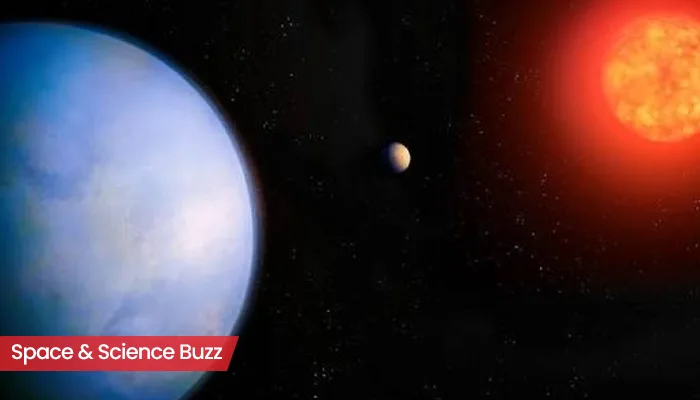
Here are today’s most important updates from the realm of Science and Space.
Scientists Capture First Detailed Image of a Sky Outside Milky Way - And It is Dying
For the first time in history, scientists have captured a detailed image of a star outside our Milky Way galaxy. Identified as WOH G64, the star is located in the Large Magellanic Cloud, which is about 160,000 light-years away from us. It's nearly 2,000 times the size of our sun.
The observations have been published in the journal Astronomy & Astrophysics. Jacco van Loon, director of the U.K.'s Keele Observatory, said in his interaction with Newsweek, "This is the first time we actually have a sharp image of a star in another galaxy. What we have been able to see here is very hot dust that has freshly formed close to the star because of some kind of eruption. We didn't know we were going to find this."

Analyzing its estimated mass, scientists have concluded that the star has lived for about 10 to 20 million years, and will soon die (massive stars have shorter lifespans). Notably, the sun is over 4.5 billion years old and is expected to live for some billions more.
Lunar Outpost Signs with SpaceX, Selects Starship Human Landing System
Lunar Outpost recently announced that it has signed an agreement with SpaceX. Under the agreement, the Colorado-based private space company will use SpaceX’s Starship Human Landing System to transport its Lunar Outpost Eagle rover to the moon.
According to reports, Starship will deposit Lunar Outpost’s rugged rover to the lunar surface by 2029. However, details about the cost, planning, or objective of the mission are still under wraps.
Lunar Outpost's Eagle lunar terrain vehicle will fly on Starship to the Moon. This launch and landing services contract enables Lunar Outpost to provide mobility and infrastructure services on the lunar surface that will drive the Artemis campaign. #TheNextLeap #DrivingArtemis pic.twitter.com/8bRieEvWl7
— Lunar Outpost (@LunarOutpostInc) November 21, 2024
(Credit: Lunar Outpost)
Justin Cyrus, chief executive of Lunar Outpost, said in an interview, "The reason we chose Starship is their technological maturation, the pace at which they move, and the quality of that organization. It’s a vehicle that we think will be able to provide reliable landing on the lunar surface, and we know that they can get it done on the timelines we need.”
Elon Musk’s Neuralink Gets Approval for Brain Chip Trial in Canada
Elon Musk-owned brain implant company, Neuralink, has secured approval from Health Canada to conduct its first clinical trials in the country. This will mark Neuralink's first operation outside the United States.
According to reports, the trial will take place at Toronto Western Hospital, which is part of Canada’s University Health Network (UHN). The primary focus will be on a device developed to enable paralyzed individuals to operate digital devices through their thoughts alone. It will assess everything from the safety to the initial functionality of its implant.

Notably, Neuralink was founded in 2016 by Musk along with a group of engineers. It has already implanted the device in two patients in the US (reportedly working well in the second trial patient).
ISRO Joins Forces with Australian Space Agency for Gaganyaan
The Indian Space Research Organisation (ISRO) has signed an Implementation Agreement (IA) with the Australian Space Agency (ASA) to boost space research in both countries, particularly focusing on the ISRO's Gaganyaan mission.
According to reports, this IA facilitates collaboration between ISRO and ASA on search and rescue operations and crew module recovery. As the Indian space agency said ISRO in a statement, "The IA enables the Australian authorities to work with Indian authorities to ensure support for search and rescue of crew and recovery of crew module as part of a contingency plan for ascent phase that aborts near Australian waters."
ISRO & ASA sign Implementing Arrangement for Gaganyaan
— ISRO (@isro) November 21, 2024
Implementation Agreement between Indian Space Research Organisation (ISRO) and Australian Space Agency (ASA) enabling cooperation on crew and crew module recovery for Gaganyaan missions was signed on November 20, 2024 further… pic.twitter.com/khdEUw6dTb
(Credit: ISRO)
Notably, Gaganyaan is designed to demonstrate ISRO’s capability in carrying out a Low Earth Orbit mission with an Indian Crew Module (of up to three astronauts) for up to three days.



.webp)
.WEBP)
.WEBP)
.webp)
.webp)


.webp)
.webp)
.webp)